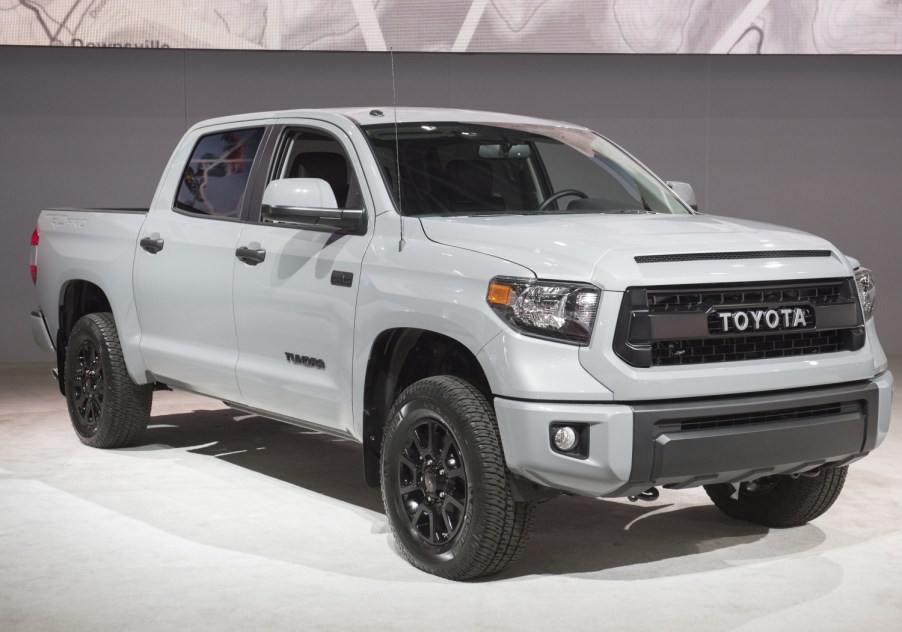
3 Most Common Toyota Tundra Problems Reported by Hundreds of Real Owners
Considering a used Toyota Tundra truck? Here are three of the most common Toyota Tundra problems reported by owners. These days, there are plenty of resources out there to help keep your Toyota pickup truck running its best for as long as possible.
One of the most common Toyota Tundra problems
When browsing the RepairPal page for the most common Toyota Tundra problems, there are a few important issues to look for. The most common issue lodged by owners on RepairPal is a ticking noise from a failed exhaust manifold. More than 260 people have reported this issue across 13 different years. This applies specifically to the models with a V8 engine.
A leaking exhaust manifold will sound like an exhaust leak for those who can recognize that sound, but it can also present as an audible ticking noise. If the engine is cold, the sound can be even more pronounced.
While this issue has been reported by buyers as low as 5,000 miles, the average mileage for the ticking noise is around 95,000. The exhaust manifold could need replacing ($1,042 -$1,290), depending on the severity of the issue. Alternatively, your used Toyota Tundra could need a replacement for the exhaust manifold gasket ($553 -$679).
Is the Toyota Tundra a reliable truck?
The Toyota Tundra is a reliable truck, but all vehicles have issues. Toyota trucks tend to have fewer issues overall, but one of the consequences of lasting a long time on the road is that issues happen. The next most common Toyota Tundra problem reported by owners is for the lower ball joint.
Toyota issued a recall for the lower ball joint, noting that it could prematurely wear from an improper finishing during production. Toyota planned to replace the ball joints. There were two different recalls for the same issue, one for the 2002-2004 Tundras and another for the 2004-2006 models.
Drivers reported this issue anywhere from 235 to 453,500 miles, but it occurred around 177,000 miles on average. You can check the National Highway Traffic Safety Administration (NHTSA) Vehicle Identification Number (VIN) lookup to confirm this was done.
Owners reported an issue with the air injector pump.

Finally, owners report issues with the secondary air pump failing. This can cause decreased fuel economy and drivability issues. Drivers might notice a check engine light if the air pump fails. While this issue can happen anytime, the average mileage was 133,582.
Other owners report that an oxygen sensor can fail, which could throw a Check Engine Light. Replacing the oxygen sensor can run from $349 to $382, around 121,844 miles on average.
Some of the YouTube channels above can be an excellent resource to keep your Toyota Tundra running at its best. Consumer Reports also has tips on finding a high-quality repair shop for any issues that pop up. The good news is that the Tundra is one of the longest-lasting vehicles on the market, so keep up with routine maintenance to stay on top of any issues.



